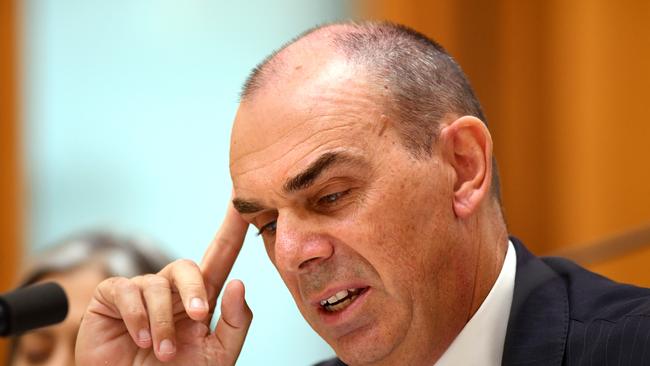
Others would have quickly followed and, indeed, some home builders had already started their ALP-driven retrenchment program. Those mass sackings would have triggered a steep decline.
The simple fact was that for the last six months very few home sites were sold and the home building industry was facing a deep slump in early 2020, and adjustments had been made in advance.
At such a time the negative gearing clamps would have been catastrophic. There will still need to be some staff cuts among builders because the pipeline is empty but they will not be nearly as savage.
Thanks to Australia’s more than one million retirees and the pressure from Adani, Scott Morrison is now the prime minister in the 46th parliament.
The truth is that Scott Morrison should have acted earlier but so too should have the Australian Prudential Regulation Authority.
Back in January the arrogant APRA organisation was declaring that its seven per cent interest rate serviceability floor was “intended to be permanent”.
It was clearly out of touch with the real world. Now it understands the looming crisis and has replaced its “permanent” cap with a 2.5 per cent buffer above borrowing rates which affectively increases bank lending by about 8 per cent.
Many journalists, including myself, had been urging the Morrison government before the election to explain to APRA the damage the regulator’s credit squeeze was causing. No doubt had APRA had not acted this week the Morrison government would have put incredible pressure on it to ease the credit squeeze.
But suddenly the pending disaster has been averted and it changes the outlook for the nation.
The share market boost reflects the transformed outlook and the increased value of franking credits.
While there are plenty of hazards ahead just look at what has happened: APRA now understands what is taking place in the economy and has weakened the credit squeeze; negative gearing will now remain; around 1.1 million battling retires won’t have to shell out on average of $4000 each via the retirement and pensioners tax; there is a low to middle income tax cut in the pipeline; interest rates will be cut; the fear among small businesses that wages were set to go through the roof has been removed and among the banks there is a greater willingness to lend.
Assuming the government carries out its unfair contract promises, the small business tax tribunal is made to work, and the government makes sure that payments by government and most major enterprises are within 30 days, we will develop enormous momentum in the economy. With that momentum will come a whole raft of cash flow-based lending opportunities to support small and medium businesses without using their homes.
On top of all this the Morrison government’s long overdue plan to enable lower income people to buy houses on a five per cent deposit will create at least 10,000 new homes and as the loan repayments come in, if the government is smart, it will invest the proceeds in new homes so in time, instead of 10,000 new homes, there will be a much greater number generated. It’s the right policy for this time.
It is too early to see a sudden swing to people building homes and buying land but the building development industry has no doubt that there will be a substantial increase in demand.
The real estate market will not return to boom because there is still a credit squeeze but further big falls are off the table. And there will be improvement in some areas.
I have had the chance in the last 48 hours to talk to a lot of small and middle sized businesses and the phone has been running hot because of my role in the mobilisation of retirees.
Everywhere there is a feeling of incredible relief and in due course that relief will be reflected in confidence.
We still have very large infrastructure spending in Victoria and New South Wales which provides a further boost.
Part of the reason for the increased momentum is the sheer energy of the Prime Minister during the campaign. He was able to mix with a host of small businesses plus ordinary people in an attempt to infect them with his confidence.
On the question of confidence, we often hear from bankers that there is no confidence in the community, but that lack of confidence was actually created by the banks themselves, plus APRA and ASIC. Nevertheless we need to make sure that we do not go back to the unlimited credit that created the boom.
At the moment Scott Morrison is on a honeymoon and with Tony Abbott no longer in the parliament he has the freedom to cast a new environment policy if he feels it necessary and make other policy adjustments. In fact he has a blank canvas.
Finally, we all understood that the ALP’s negative gearing plan would have reduced the value of existing houses, which in turn would have affected bank lending and the willingness of people to buy houses.
What I didn’t appreciate was that a vast number of younger people had planned to buy a house to live in and had in the back of their minds that they might travel or move to another state for a time and during that time negatively gear their house.
With the Labor rules they couldn’t embrace that strategy. Accordingly they were completely taken out of the housing market. They are about to come back.




Two dramatic events have transformed Australia. First, we have dodged an incredibly dangerous bullet, and second a remarkable set of bullish economic stars are suddenly aligned. I learned yesterday that one of Australia’s largest home builders was planning a substantial reduction in its work force next week had Bill Shorten won the election.